Facts About Niagara Falls
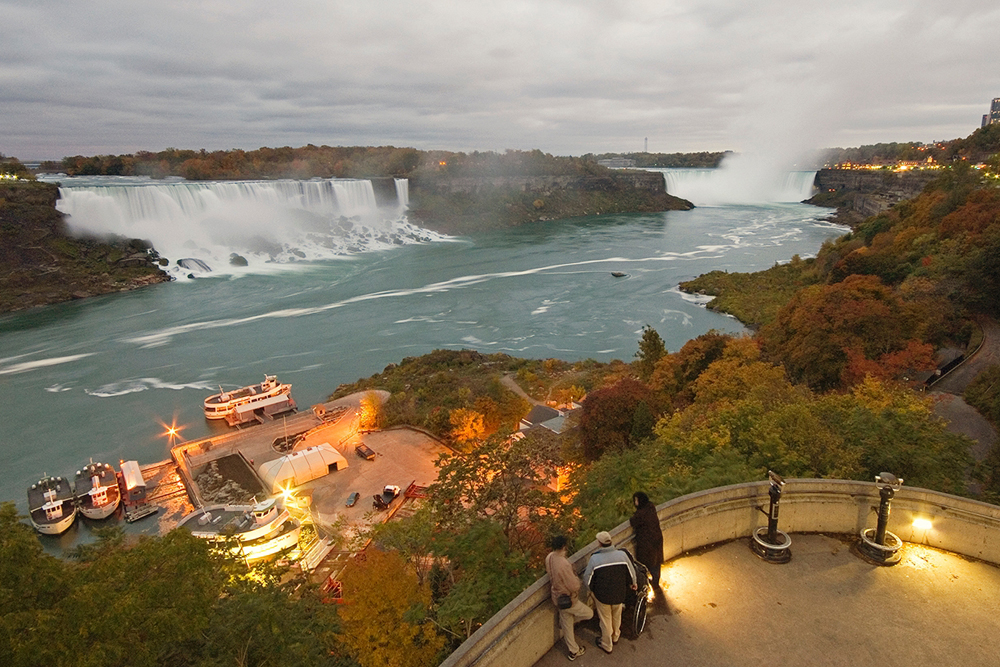
Niagara Falls is a geological wonder and one of the most famous waterfalls in the world. Straddling the border between the United States and Canada, it has been a popular tourist attraction for over 200 years, as well as a major source of hydroelectric power.
Geography
Niagara Falls occurs on the Niagara River, a 36-mile (58 kilometers) channel that connects Lake Erie and Lake Ontario and separates New York from Ontario. The difference in elevation between the two lakes is about 325 feet (99 meters), and half of that height occurs at the falls, according to Niagara Parks.
Niagara is made up of three separate waterfalls: Horseshoe Falls (or Canadian Falls), American Falls and Bridal Veil Falls. According to the World Waterfall Database, Horseshoe Falls has a height of about 167 feet (51 m) and stretches over 2,700 feet (823 m) across at its crest; American Falls drops between 90 and 120 feet (27.5 to 36.5 m) and spans about 940 feet (286.5 m) at its crest; Bridal Veil Falls also has a drop of 90 to 120 feet but is only 45 feet (14 m) wide. Together, the average width of the entire falls is 3,950 feet (1,204 m).
The three cascades form the second largest waterfall in the world (after Victoria Falls in Africa), according to the Travel Channel. More than 6 million cubic feet (168,000 cubic meters), or about 70 Olympic-size swimming pools, of water go over the falls every minute. The water rushes over the falls at about 25 mph, according to the New York State Museum (NYSM). The deepest point in the Niagara River is just below Horseshoe Falls, at 167 feet (51 m) deep — equal to the height of the falls, according to Niagara Parks. The Niagara Gorge begins at the foot of the falls and ends 7 miles (11 km) downstream at Lake Ontario. Cliffs rise as high as 1,200 feet (366 m), formed by thousands of years of erosion.
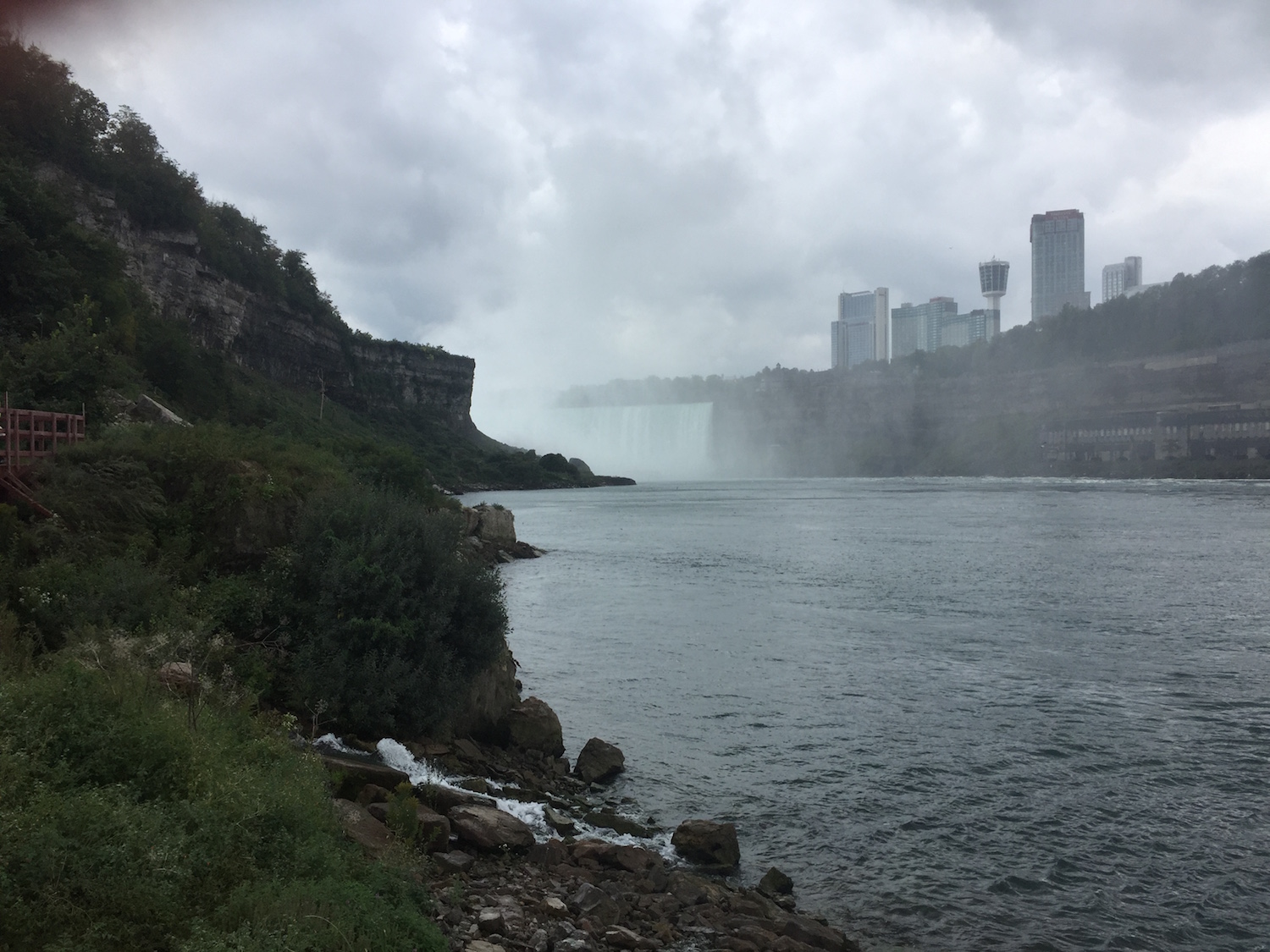
Evolution of Niagara Falls
The geologic forces that formed Niagara Falls started working about 16,000 years ago during the last Ice Age. A glacier more than a mile thick covered the northern regions of the North American continent from Ohio to New York, according to the NYSM. As the ice retreated, it carved out the Great Lakes.
About 12,000 years ago, waters draining the lakes found a low-lying pathway and carved out a channel — the Niagara River. Lake Erie and Lake Ontario were split between higher elevations and lower elevations and the water drained from the upper lake to the lower over the Niagara Escarpment and eventually created a waterfall.
When Niagara Falls formed, it was about 7 miles (11 km) downstream from where it is today. Even now, erosion continues to push the falls farther upstream at a rate of about a foot a year. By some estimates, the river will erode back to Lake Erie in about 50,000 years, cutting through an escarpment and through soft shale and beginning to drain Lake Erie.
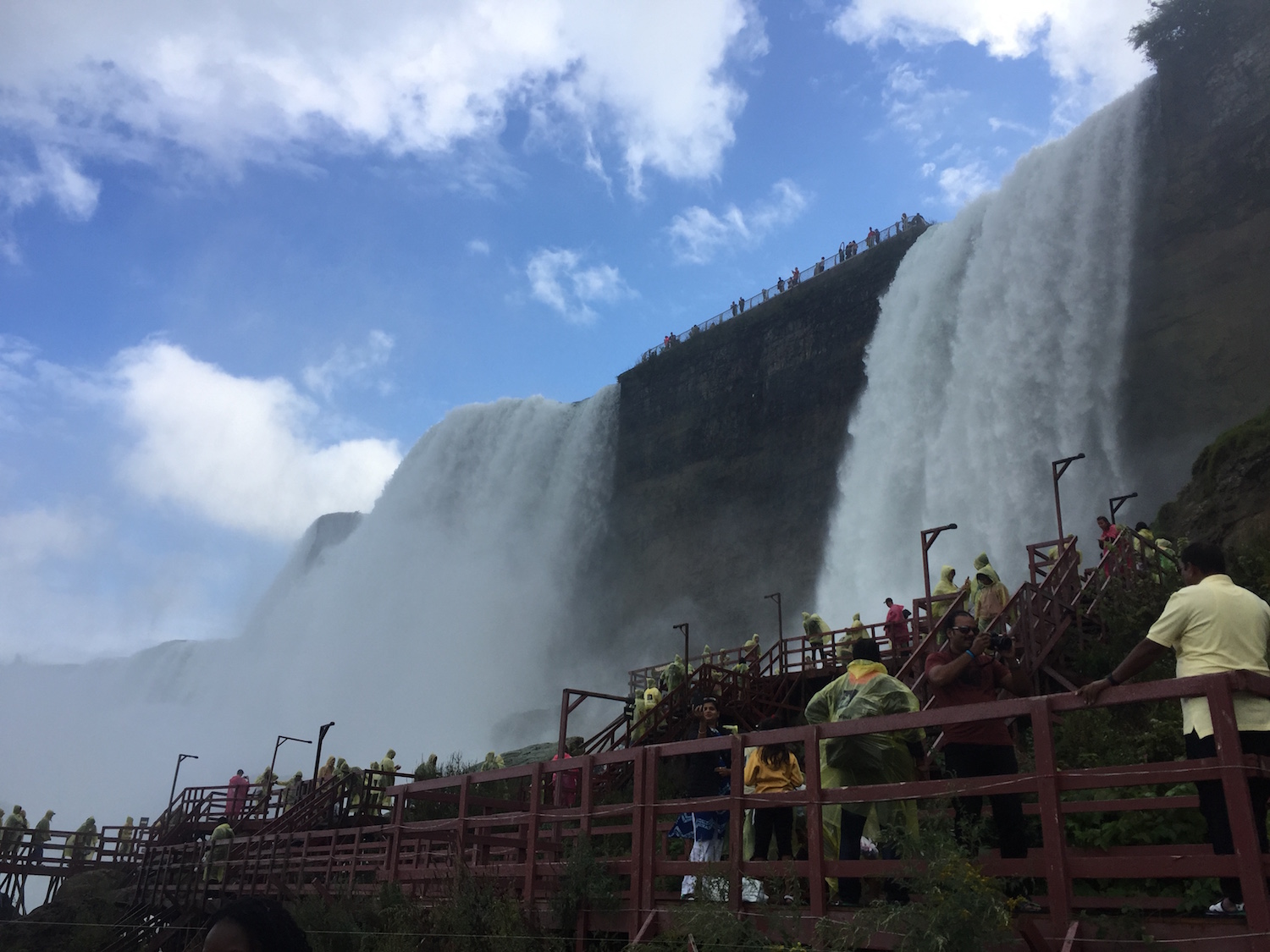
History of Niagara Falls
Native Americans settled in the area between A.D. 1300 and 1400, according to Niagara Falls Info. One of the first native tribes called themselves the Onguiaahra, which French explorers turned into "Niagara." Also among the earlier settlers was an Iroquois group, the Atiquandaronk, who were called the "Neutrals" by French explorers because of the tribe's peacekeeping efforts between neighboring warring tribes. In the early 1600s, the Neutrals had a population of 20,000 to 40,000 people.
The first European to visit the falls was probably Étienne Brûlé, a French explorer who lived among the Neutral Nation in 1626. However, he left no written record, but he did report to his patron, Samuel de Champlain, who wrote about the falls. In 1632, Champlain was the first to draw and publish a map of Niagara. The first eyewitness account was written by Louis Hennepin, a priest who accompanied Robert de La Salle to the falls in 1678, according to American Journeys.
The French built the first fort above Niagara Falls in 1679, known as Fort Conti, according to Old Fort Niagara. The fort didn't last long, and Fort Denonville was built in its place in 1687. That fort only lasted for about a year. Fort Niagara, the first permanent fort, was built in 1726.
The British captured Niagara Fort in 1759 during the French and Indian War, which broke out in 1754 and raged all across the Niagara region. Niagara Fort assumed American control in 1796, was recaptured by the British in 1813, and ceded back to the United States after the War of 1812. Between 1813 and 1963, Niagara Fort served as a peaceful border post and as a barracks and training station for American soldiers. Today, Niagara Fort is a popular place that tourists can stroll through while visiting the waterfalls.
In the early 1800s, the number of visitors visiting the waterfalls was increasing, as was the demand for additional amenities. Hotels, resorts, and other tourist attractions began to spring up on the Canadian side of Niagara Falls while factories and mills were being built on the American side, according to New York Waterfalls.
The area built up quickly. The first man-powered ferry opened in 1820 to ferry passengers across the Niagara Gorge. The Niagara Falls Museum opened in 1827, and the Maid of the Mist opened in 1846 to carry passengers, livestock, and cargo across the gorge. The first suspension bridge opened in 1848, a railway extension brought steam engines to the waterfalls in 1854, and a railway suspension bridge opened in 1855 to allow trains to cross the gorge. A canal to divert water from the river to power plants was built in 1861, and the first electric streetcar began operation in 1887.
Niagara Falls also served as a part of the Underground Railroad in the mid-1800s, according to Niagara Falls Underground Railroad Heritage Area. Many residents were anti-slavery and were part of an established network in the area to help escaped slaves. Many hotels in the area offered employment to the growing African American population, including a great number of those who had recently escaped slavery.
According to Niagara Falls State Park, the Niagara Reservation, which encompasses Niagara Falls, was established as the first state park in the United States in 1885. The park covers more than 400 acres, which includes about 140 acres under water.
Nikola Tesla and George Westinghouse designed and built the first hydroelectric power plant in the world in 1895, bringing clean electricity to the growing vicinity, according to the Tesla Memorial Society of New York. According to the Buffalo Library, power was even transported to Buffalo, New York, within a year.
The cities of Niagara Falls in New York and in Ontario were incorporated in 1892 and 1903, respectively, according to New York Waterfalls.
The areas on both the American and Canadian sides of Niagara Falls have continuously built up and are largely built on tourism. Today, approximately 12 million visitors visit the waterfalls per year, according to Niagara Falls Canada.
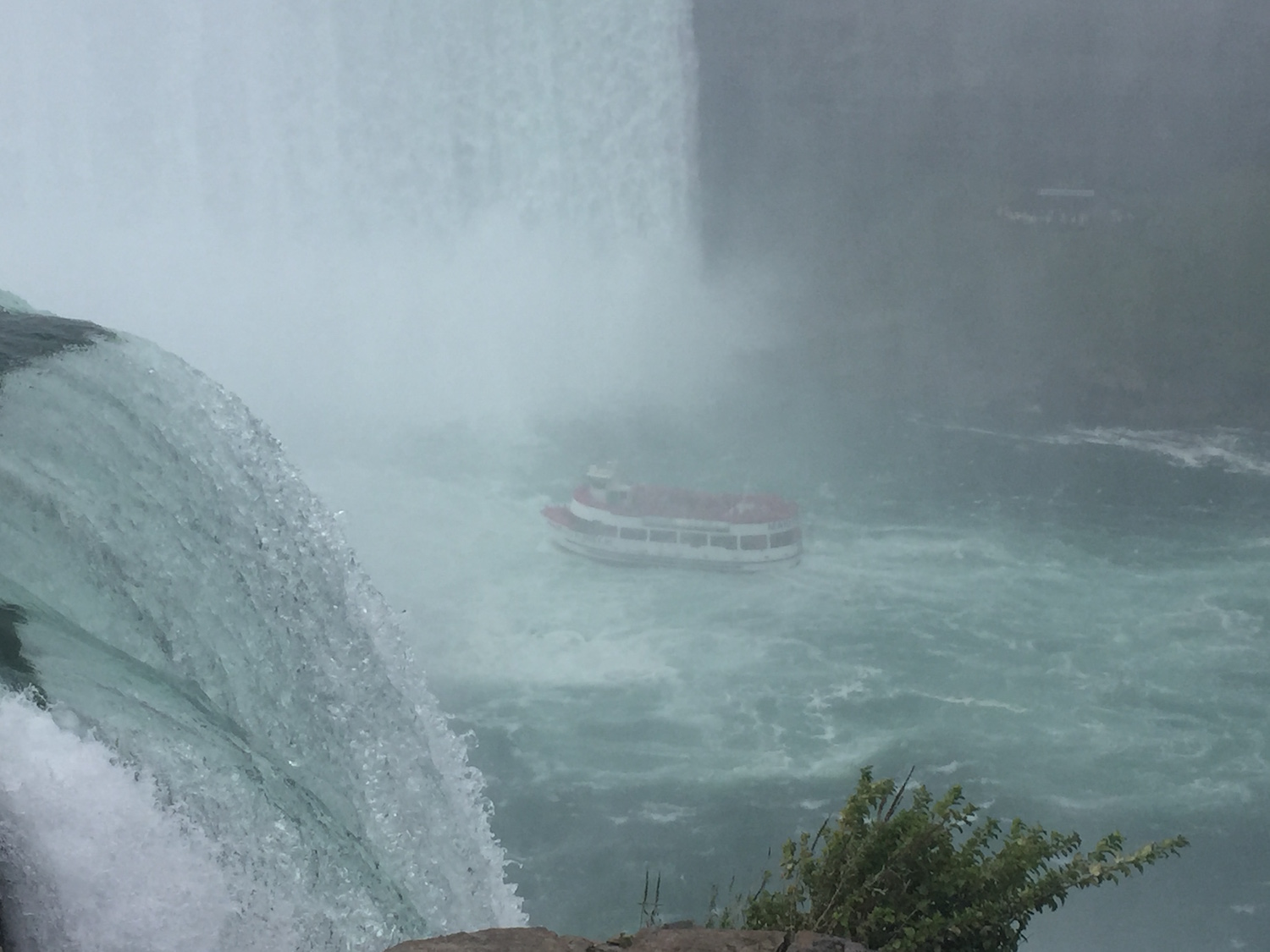
Stunts
From the first planned and recorded tourist stunt in 1827, dozens of people have tried to make history by going over the waterfalls or by crossing it in some unconventional manner. Some have succeeded in their efforts but, sadly, others have not.
The first known stunt was arranged in 1827 by William Forsyth of the Pavilion Hotel. It involved decorating a boat as a pirate ship and putting a number of animals onboard — including a bison, two bears, two raccoons, a dog and a goose — and sending it over the waterfalls, according to New York Waterfalls. The two bears escaped before the boat went over but the rest went down with the boat over the waterfalls.
The first person to jump down the waterfalls was Sam Patch (also known as the Yankee Leaper) in 1829 when he dove 85 feet (26 meters) down Horseshoe Falls. He survived the dive, as well as another the following week from a height of 135 feet (41 m).
Charles Blondin was the first to walk across the gorge in 1859 on a tightrope, according to New York Waterfalls. He walked across a 1,100-foot-long (335 m) rope that was 160 feet (49 m) above the gorge just past the waterfalls in approximately 20 minutes. He then followed with many other stunts including crossing his tightrope while blindfolded and pushing a wheelbarrow across.
Italian tightrope walker Maria Spelterini was the first and still the only woman to walk across the gorge on a tightrope in 1876. She repeated her stunt blindfolded, with baskets on her feet, and even once with her hands and feet bound, according to New York Waterfalls.
Captain Matthew Webb was the first to attempt to swim across the Whirlpool rapids in 1883 without any aids. Unfortunately, according to New York Waterfalls, he did not make it and his body was found a few days later.
Annie Edson Taylor, a schoolteacher from Michigan, was the first person to go over the waterfalls in a barrel in 1901, according to New York Waterfalls. She survived with minor injuries.
In 1951, shortly after another failed attempt at going over the waterfalls, the Ontario government made any stunting within the park boundaries illegal. This decree, however, has not stopped the occasional person from going over or crossing the waterfalls in some form or another.
Additional resources
Sign up for the Live Science daily newsletter now
Get the world’s most fascinating discoveries delivered straight to your inbox.
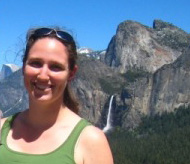
Rachel Ross is a science writer and editor focusing on astronomy, Earth science, physical science and math. She holds a Bachelor of Arts in Philosophy from the University of California Davis and a Master's degree in astronomy from James Cook University. She also has a certificate in science writing from Stanford University. Prior to becoming a science writer, Rachel worked at the Las Cumbres Observatory in California, where she specialized in education and outreach, supplemented with science research and telescope operations. While studying for her undergraduate degree, Rachel also taught an introduction to astronomy lab and worked with a research astronomer.










